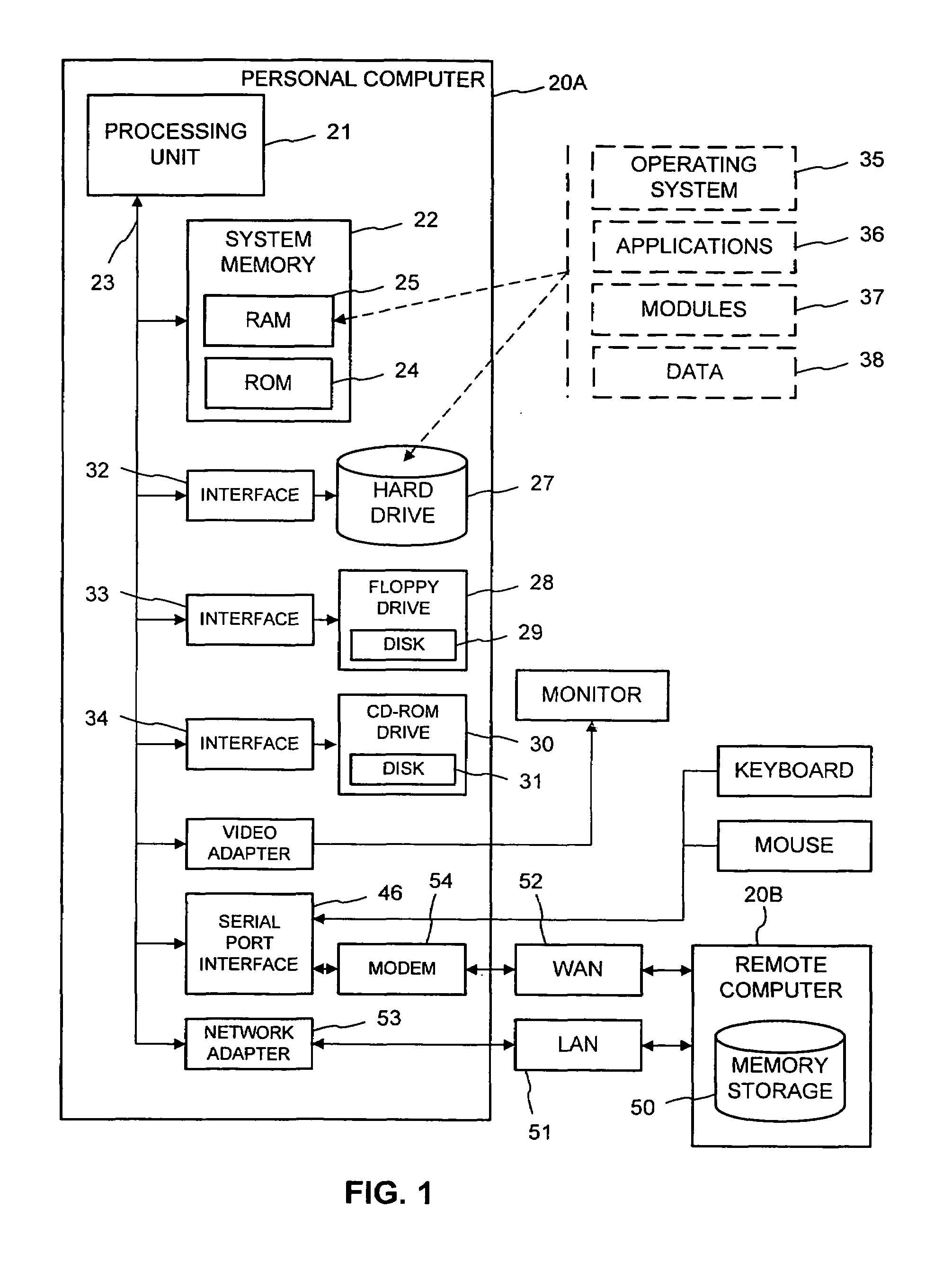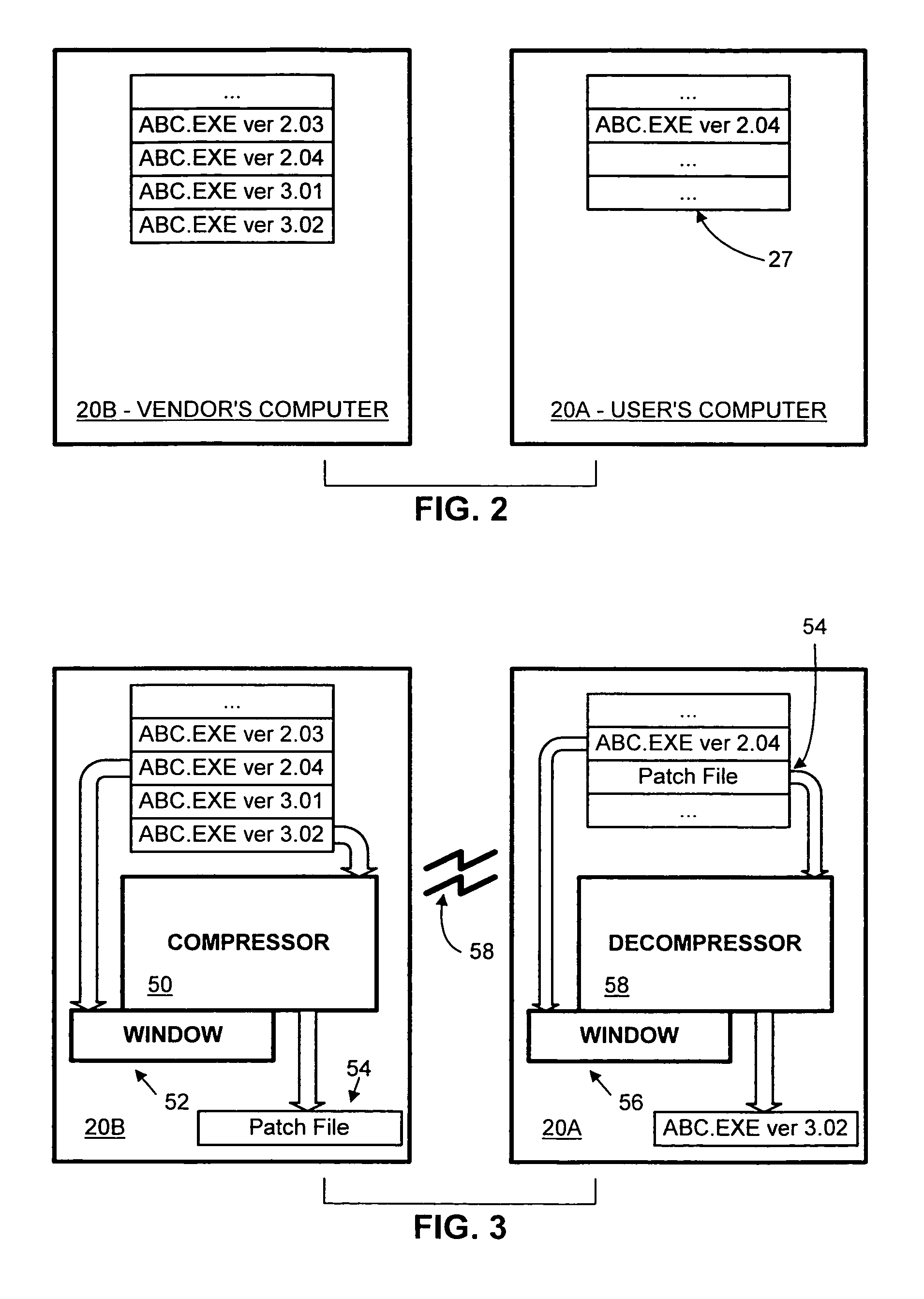Method and system for updating software with smaller patch files
a technology for patching and software, applied in the field of methods and systems, can solve the problems of still suffering from certain drawbacks, the version of the old file on the user's computer may not match the version distributed by the vendor, and the risky business of patching, so as to reduce the size of the patch file and the output file more compact
- Summary
- Abstract
- Description
- Claims
- Application Information
AI Technical Summary
Benefits of technology
Problems solved by technology
Method used
Image
Examples
Embodiment Construction
[0050]To illustrate the principles of the invention, the following discussion details an exemplary embodiment employing LZ77-type compression / decompression processes. However, as noted above, the invention is not so limited, but can be applied e.g. to any compression technology in which the compressor adapts to the data to improve compression efficiency.
[0051]FIG. 1 and the following discussion provide a brief, general description of computers used in an exemplary embodiment. While the embodiment is described in the context of computer-executable instructions of computer programs that run on personal computers, those skilled in the art will recognize that the invention also can be implemented in combination with other program modules. Generally, program modules include routines, programs, components, data structures, etc. that perform particular tasks or implement particular abstract data types. Moreover, those skilled in the art will appreciate that the invention can be practiced w...
PUM
 Login to View More
Login to View More Abstract
Description
Claims
Application Information
 Login to View More
Login to View More - R&D
- Intellectual Property
- Life Sciences
- Materials
- Tech Scout
- Unparalleled Data Quality
- Higher Quality Content
- 60% Fewer Hallucinations
Browse by: Latest US Patents, China's latest patents, Technical Efficacy Thesaurus, Application Domain, Technology Topic, Popular Technical Reports.
© 2025 PatSnap. All rights reserved.Legal|Privacy policy|Modern Slavery Act Transparency Statement|Sitemap|About US| Contact US: help@patsnap.com



